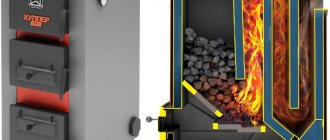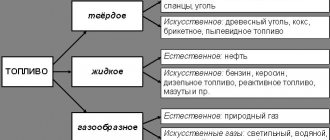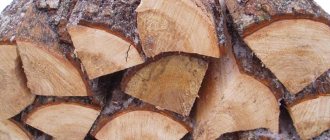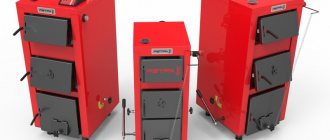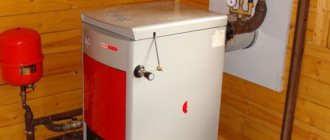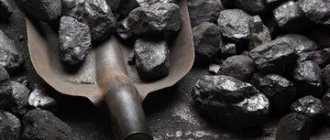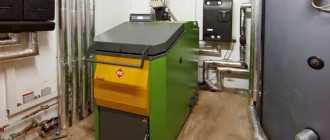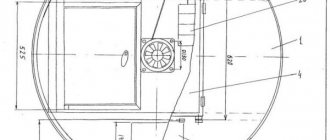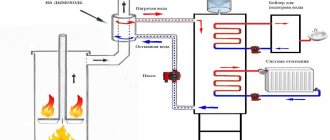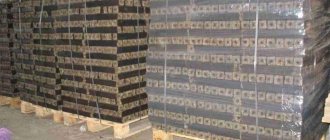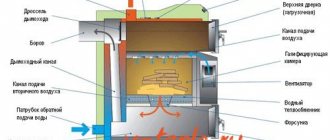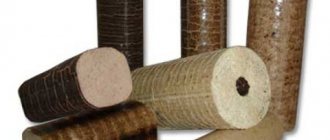Process description
The need for environmentally friendly equipment for the processing of chemical waste has arisen in our society for a long time. The first pyrolysis boilers began to run at the end of the nineteenth century. And the creation of modern pyrolysis units solved several issues at once:
- ecological component;
- the ability to accumulate the results of combustion;
- economic benefit.
However, the economic aspect of the use of pyrolysis is designed for the future. Pyrolysis is quite an expensive pleasure. It requires appropriate equipment and specially trained personnel.
But in operation, the pyrolysis plants are practically autonomous. The units require electricity only to start, the further operation of the boiler is carried out at the expense of the resources produced during the combustion process. At the same time, the surplus of generated energy and steam can be used for domestic purposes, redirecting them to utility networks.
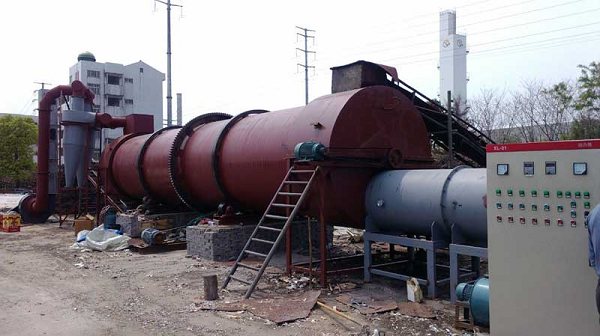
In Russia, pyrolysis is just beginning to gain popularity, while in Europe not a single large enterprise can do without pyrolysis units. There are quite a few reasons for such a demand for pyrolysis:
- a waste-free way of processing waste and all kinds of industrial pollution;
- the level of efficiency from pyrolysis is 90%;
- the possibility of obtaining new compounds, recyclable materials;
- the creation of irreplaceable resources such as synthetic oil;
- obtaining hydrocarbons, organic acids and other chemical elements;
- source of heat supply for enterprises.
Based on the choice of raw materials for processing, the pyrolysis reaction can proceed at different temperature conditions. The end result will also differ in the composition of chemical elements.
Depending on the heating temperature of the furnace and the additional components of pyrolysis, distillation is usually divided into two types: dry and oxidative.
How to choose a pyrolysis boiler
The market provides a wide choice for the buyer. Most of the units are the creation of Czech manufacturers, but the leadership is held by German representatives. Almost all models need electricity, they can work on coal, wood, or be combined.
When choosing, you should pay attention to:
- unit power;
- external design;
- number of contours.
When purchasing such a heating device, it is necessary to correctly select its power so that there is enough heat for the room. The benchmark is as follows: 1 kW of power of a pyrolysis boiler is required to heat 10 sq. m premises. This is taking into account the fact that the house is well insulated, the height of the walls does not exceed 3 meters. If heat losses of the house are possible, the buyer is not sure about the reliability of the building, then not 1 kW is taken into account, but 1.3 kW. For example, for a room with an area of 30 sq. m you need a pyrolysis unit with a capacity of at least 3.9 kW (1.3 kW * 30 sq. m / 10 = 3.9 kW).
Pyrolysis boilers are technological devices that have a large number of electronics and various settings, more expensive ones have a control panel and a ceramic furnace that allows you to keep heat for a long time, good technical characteristics. You can also find newer models: a pyrolysis boiler in a cast iron body (German manufacturer Dakon).
There are also models that can still function without electricity. These are OPOR boilers (Czech).The essence of their work is as follows: the formation of gases occurs during the pyrolysis of fuel, their path passes by a diffusion-type burner, where they are directed to the combustion chamber.
Combustion takes place thanks to the secondary air. Secondary air is not amplified by the fan and is not directed to the combustion chamber, unlike most models, it is sucked into the chamber during the movement of gases. This is facilitated by a special porphyry tube. By opening the secondary and primary air dampers, the boiler output is regulated. Such models work completely autonomously and guarantee an efficiency of 89%.
Autonomous heating systems are relevant primarily where there is no possibility of connecting to the main heat supply. One of the modern types of such systems are solid fuel pyrolysis boilers with a long burning period.
The various models available for sale differ in power, configuration and price. Such boilers have high efficiency and minimum emissions of combustion products into the atmosphere. The ability to automate control makes their use more convenient.
Oxidative pyrolysis
This type of pyrolysis can be called the most environmentally friendly and productive. It is used to process recyclable materials. The reaction takes place at high temperatures. For example, in the pyrolysis of methane, it mixes with oxygen, the partial combustion of the substance releases energy, which heats the remaining raw material to a temperature of 16,000 ºС.
Oxidative pyrolysis is used to neutralize industrial waste with a high oil content. And also for the processing of plastic, rubber and other materials that do not lend themselves to natural decomposition in the natural environment.
“Oxidative pyrolysis makes it possible to process raw materials of various consistencies. Including materials in liquid and gaseous state ”.
Principle of operation
Unlike traditional solid fuel boilers, pyrolysis boilers use a double combustion cycle. In the process of thermal decomposition of organic substances, pyrolysis gases are released, the combustion of which leads to a large release of thermal energy.
The use of pyrolysis allows you to get more heat from fuel combustion. Pyrolysis (gas generating) boilers have two chambers - for burning solid fuel and released gas.
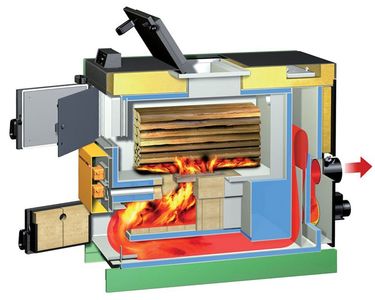

In the first chamber, combustion occurs at a low oxygen level and high temperature (200-800 ° C), this starts the pyrolysis process. The amount of gases emitted depends on the raw material used. Wood is best suited as it produces the most pyrolysis gas when burned.
The optimal thickness of firewood is from 70 mm, in addition to them, you can use pellets or sawdust in an amount of no more than 25%, since they do not provide sufficient combustion power. The operation of a long-burning gas-generating boiler is carried out according to the following scheme:
- The fuel is placed on the grate (refractory grate) through the loading window.
- Provide primary air supply to it.
- The fuel is ignited and brought to the mode, achieving the required temperature.
- The primary air supply is limited by closing the valve, thereby starting the pyrolysis process.
- By means of a fan, pyrolysis gas enters the secondary chamber, where secondary air is supplied.
- Hot gas, on contact with oxygen, burns, releasing a large amount of heat, which heats the coolant in the heat exchanger.
- The combustion products are discharged through the chimney.
Depending on the amount of incoming secondary air, the reaction takes place at different rates. This allows you to regulate the temperature of the coolant using an automatic valve, limiting the air supply to the afterburner.
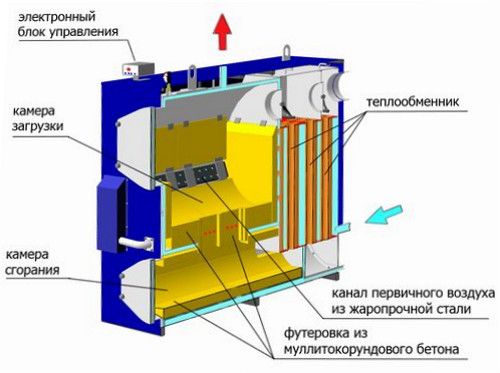

With the optimal quality of the wood being burned, the efficiency of long-burning pyrolysis boilers is 85-90%. This indicator drops sharply with an increase in the moisture content of the wood, since water vapor reduces the concentration of combustible gases.
Types of dry pyrolysis
Dry pyrolysis is one of the most demanded in the industry. With its help, fuel, various chemical compounds are obtained and recyclable materials are rendered harmless. Using different temperature regimes of pyrolysis, gas, liquid and solid combustion products are obtained.
Heating up the boiler to a maximum temperature of 5500 ºС is considered a low-temperature mode. At such temperatures, the formation of gases practically does not occur. The work is aimed at the production of semi-cokes (in industry they are actively used as a fuel) and resins, from which artificial rubber is subsequently produced.
The course of pyrolysis at temperatures from 550 to 9000 ºС is considered low-temperature, but in fact, given the technical capabilities, it belongs to the average temperature regime. Its use is advisable when it is necessary to produce pyrolysis gas and solid sediments. In this case, the feedstock may include fractions of inorganic origin.
The course of pyrolysis at temperatures above 9000 ° C is considered a high-temperature reaction. Operation of the boiler at a maximum temperature of 9000 ºC allows to obtain solid materials (coke, charcoal, etc.) with a low proportion of emitted gas.
Distillation using higher temperature conditions is necessary to obtain predominantly gaseous substances. The practical benefit of the high temperature regime is that the resulting gases can be used as fuel.
“High-temperature pyrolysis is not picky about the content of processed raw materials. When using the low temperature mode, all preparation steps must be followed, including drying and sorting. "
The power of pyrolysis: brown coal gives Yakutia energy independence
YAKUTIA.INFO. The economic life of Yakutia is highly dependent on the so-called northern delivery. When every year the delivery of vital goods is organized to the distant northern regions of the republic. Most of which are fuel for boilers and power plants.
The scale of the event is great, the delivery is carried out along all the large rivers of Yakutia. Dozens of kilometers of dirt roads and winter roads are being laid.
At the same time, tens of billions of budget rubles are spent annually on the organization of the delivery. But all these funds could be used for other purposes. In addition, with the annual increase in the price of fuel, the delivery of all goods rises in price, and the prices for food go up. Fuel for boilers and power plants goes gold. Expensive energy resources, in turn, make the development of any private initiative in the regions unprofitable. I faced all this in practice Vladimir Ivanov, General Director of Innovative Energy LLC.
- When I worked as Deputy Head of Administration of the Nyurba District for Economics and Finance from 2007 to 2009, I began to think about the need for alternative supply of the regions of the republic with accessible energy resources. Boiler houses were then heated with local low-calorie brown coal, there was little heat from it. We held meetings in fur coats, except that we sat without hats and mittens. I am an engineer by training, I worked in the coal industry. They told me - you are our specialist, do something with this coal it is impossible to heat them.
Once, when I accompanied a government commission during a field report to the population of the area. In one of the villages, a local resident, an elderly man of about seventy, took the floor. He said the following: “You say that you are taking measures to support agriculture. Spend billions of rubles on this every year.And I and my neighbors do not feel it. We are not a member of a cooperative, we have private farmsteads, support programs do not concern us. Walk around the village and see. Every second, in the yard, has a Chinese tractor or a Belarus tractor. We, the people of Sakha, from time immemorial, did not complain to anyone, worked, fed ourselves, lived normally. In order for us to live better and to be able to earn money ourselves. Give us a cheap solarium. I propose to use these funds for dating diesel fuel. Today it costs 40 rubles per liter (in those days). And I do not only mow hay on this tractor. I carry ice from the river, firewood, I need it everywhere on the farm. I have no salary, as I will support my farm in such conditions. If fuel becomes more affordable, we will be able to support ourselves without unnecessary subsidies. "
I figured there was some reasonable grain in this proposal. And then I thought about how to reduce the cost of diesel fuel for the villagers. It may seem strange that in Yakutia, with its large deposits of coal, oil and gas, there is a problem with the affordability of energy resources. However, the specifics of the region played a role here. First, there are no proven oil and gas reserves in the northern territories of the republic, where fuel and energy resources are being delivered. Second: a large territory of the republic with a low population density. Therefore, it is unprofitable for large companies engaged in the development of oil and gas in the republic to sell them in the interior of the region. All of their activities are export-oriented. But in each river basin, along which the districts are located, there are own coal resources. In this regard, Vladimir Ivanov, as a specialist in the coal industry, decided to implement his brown coal processing project. The basis of the project is the use of fast pyrolysis technology for the processing of local hydrocarbon raw materials, which is practically not in demand on the market today.
- Taking into account the delivery, according to the northern delivery, the cost of fuel resources rises in price by 2-3 times. What kind of competitive production can we talk about here? Placing pyrolysis plants in areas with their own coal deposits, such as Momsky, Ust-Yansky, Verkhrnekolymsky, Bulunsky and Kobyaysky, will allow supplying all nearby uluses with their own fuel. Thus, the entire territory of the republic will be supplied with local fuel. According to our calculations, fuel prices will decrease significantly. There will be jobs for those who will mine and process local brown coal or peat. Accordingly, the price of heat and electricity will decrease. And this is a very favorable factor for the development of small and medium-sized businesses in villages and villages. Significant budgetary funds will be freed by reducing the northern delivery. In general, there will be a large multiplier effect.
WHAT IS PYROLYSIS?
PYROLYSIS - from the Greek fire + decay, that is, the decomposition of a chemical compound when heated, without oxygen (thermal destruction) at temperatures from 250 - 850 ° C. The fast pyrolysis process is based on the theory of phase transitions and is predominantly exothermic, accompanied by the release of thermal energy. When exposed to pre-dried brown coal simultaneously with high temperature and fast speed, its explosive "boiling" occurs, accompanied by the transition of a part of brown coal from a solid state to a gaseous one. Further, the gas, passing through the cooling system, partially turns into liquid.
When processing brown coal, enriched coal is obtained, which in its energy characteristics is not inferior to imported coal, as well as synthetic gas, which can be safely used to generate electricity or to obtain dimethyl ether.The latter can already be used today as a liquid fuel oil, and in the future it can be used as an analogue of diesel fuel (synthetic motor fuel) or household gas for cooking.
PROJECT FEATURES
There are only three of them. Firstly, the most important thing is that it is possible not only to process raw materials, but also to dispose of industrial and agricultural waste. For example, chicken manure, after processing which you can safely get synthetic gas. Secondly, there is absolutely no need to supply heat and electricity to the complex - all this can be obtained using our own synthetic gas, which will be directly reflected in the cost of products. Third, there is no waste.
EIGHT TONS OF COAL - ALL FOR TESTING!
Large-scale ideas require large-scale implementation. Just imagine: to prove the innovativeness of his idea, Vladimir went to great lengths. First, he conducted one test in the Moscow region, for which it was required to bring 1.5 tons of coal. A couple of years later, the turn of the next test came - this time in Germany, with the direct participation of the engineering company DGEngineering GmbH. To implement everything in the best possible way, the Yakut had to send 1.8 tons of Yakut coal to Europe.
And only after the work carried out and receiving positive results, they believed the enthusiast and the government of the republic turned its attention to him: in 2012, the leadership of the republic, represented by the State Committee for Innovation Policy and Science of Yakutia, made a decision and financed the creation of a demonstration installation for fast pyrolysis of brown coal, which was launched this year in Nyurba. Do you think that was the end of it? Nothing like this. There, on the demonstration unit, demonstration technological runs of 5.0 tons of brown coal were again carried out. Once again, the results made it clear to everyone: the technology is more than effective. - Why was it necessary to carry out so many tests? - Of course, I could paint the theory with all the calculations sitting at home or in the office. But it was important for me not only to understand for myself, but also to prove everything in practice. And only after the studies were carried out, the specific figures of the material balance - the outputs of pyrolysis products, that is, how much enriched coal and synthetic gas is obtained from one ton of brown coal - became known. Without these figures, we simply would not be able to calculate the economics of the project. Now, I am quite confident in the calculations of the economic efficiency of the project. According to Vladimir Ivanov, he initially understood that a new project, especially innovative in terms of technology, would require not only a lot of time and certain financial resources, but also patience and inexhaustible pressure to overcome all barriers, including administrative ones.
- I spent 5 years promoting this project. But today I have collected all the necessary documents, namely the positive conclusions of the relevant committees and ministries. The pilot project was approved by the Ministry of Housing and Communal Services and Energy of the Republic. The Agency for Investment Development of the Republic recognized the project as cost-effective and economically efficient. The project also received approval from the head of Yakutia, Yegor Borisov. Interviewed by Timofey EFREMOV
Solid waste pyrolysis
Environmentally friendly waste processing is one of the key areas of pyrolysis use. These units can significantly reduce the negative impact of the anthropogenic factor on the environment.
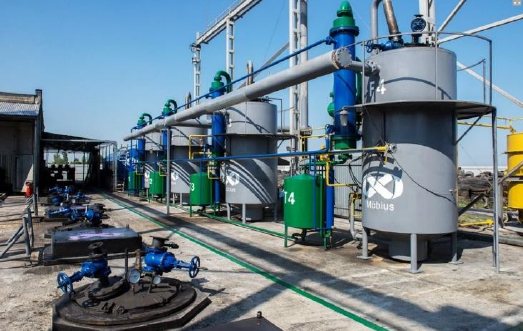

In the process of pyrolysis bioactive substances decompose, heavy metals are not smelted. After thermal decomposition in pyrolysis boilers, there is practically no unclaimed waste, which makes it possible to significantly reduce the area for their further storage.
So, for example, burning 1 ton of tires, we pollute the atmosphere with 300 kg of soot.In addition, about 500 kg of toxic substances are released into the air. Recycling of the same material in pyrolysis plants allows using rubber for energy purposes, getting recyclable materials for further production and significantly reducing harmful emissions.
It is possible to reduce the harmful effect on the environment thanks to a multi-stage processing system. In the pyrolysis process, waste goes through four stages of disposal:
- initial drying;
- cracking;
- afterburning of the remnants of processing in the atmosphere;
- purification of the obtained gaseous substances in special absorbers.
Pyrolysis plants allow you to process waste:
- wood processing enterprises;
- pharmaceutical industry;
- car industry;
- electrical engineering.
The pyrolysis method successfully handles polymers, sewage waste and household waste. Negates the impact on the nature of petroleum products. Great for organic waste disposal.
The only disadvantage of pyrolysis units is found in the processing of raw materials containing chlorine, sulfur, phosphorus and other toxic chemicals. The half-life products of these elements under the influence of temperature can combine with other substances and form toxic alloys.
Advantages and disadvantages of pyrolysis boilers
In gas generating boilers, fuel is used most efficiently, since it burns almost completely. This not only allows you to get more heat, but also reduces harmful emissions into the atmosphere.
Sometimes such boilers are used to dispose of industrial waste with minimal pollution of the atmosphere. In addition, the amount of ash is reduced, which means that the cleaning frequency is less (when using firewood - about once a week).
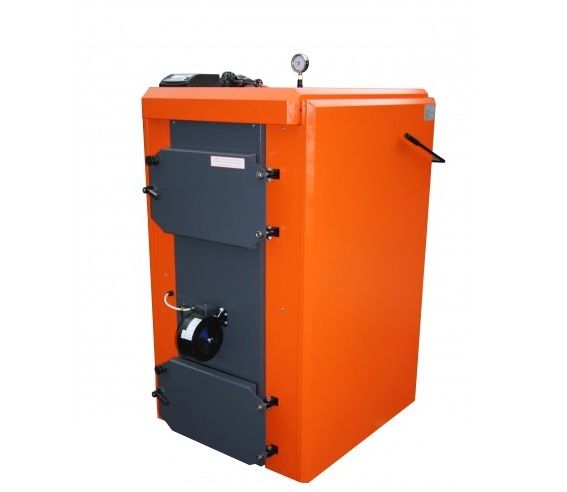

With direct combustion of solid fuel, it is rather difficult to regulate the heating of the coolant. In long-burning pyrolysis boilers, this is possible thanks to the control of the air supply.
The size of the wood used can be quite large; non-chopped wood can be used. Modern models are equipped with electronic equipment, which makes the control of the heating process simpler and more convenient.
The disadvantages include the high cost of equipment and high requirements for the quality of raw materials. The savings on fuel will pay off the equipment costs over time. It is recommended to use firewood dried within 12 months with a moisture content of 12-20% as fuel.
Otherwise, the boiler will not work with the declared power, and will also go out when the air supply decreases. At a low temperature of the coolant in the return pipe, the temperature in the primary chamber will drop, which may cause the fuel to go out.
To avoid this, a special bypass pipe is sometimes mounted. At the same time, the design of the heating system becomes more complicated, and the cost of installation increases.
Using forced draft
To ensure the correct operation of the long burning pyrolysis boiler, the supply of primary and secondary air is required. Forced draft is provided by a fan or a smoke exhauster, which operates from the power supply.
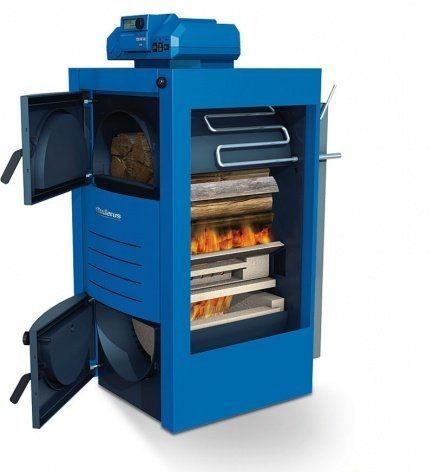

This allows:
- quickly increase the temperature in the combustion chamber and the heating system as a whole;
- accelerate the onset of the pyrolysis process;
- prolong the operation of the boiler with one fuel load;
- automatically maintain the temperature of the coolant.
The only drawback is the need for constant power supply. In its absence, the operation of the heating system is suspended. A way out of the situation can be the use of a natural draft boiler, which does not require a connection to the mains.
For its full-fledged operation, a well-designed and installed chimney is required. These boilers should be cleaned more frequently. Due to the lack of electronics, the likelihood of breakdowns is minimized.However, the efficiency of such boilers is lower, which is compensated by the lower cost.
The use of solid fuel pyrolysis boilers is one of the most effective ways to organize autonomous heating. Modern electronic equipment that controls the work process allows you to automate the heating process.
The lack of gas or insufficient power of the electrical network forces homeowners to solve the problem of winter heating with solid fuel equipment. Among these units, pyrolysis boilers of long burning stand out as a separate group (the second common, not entirely accurate, however, the name is gas generating boilers). The reason for this is their high efficiency - up to 85% and a large range of device power - from 30 to 100%.
Wood pyrolysis
This procedure is also called wood cracking, and it originated in Russia. The prototype of the modern unit was invented by our charcoal burners in time immemorial. To obtain charcoal without access to air, they ignited wood under a layer of earth.
Today this process is much more perfect and takes place in several stages. Cracking begins when heated to 2000 ºС. At this stage, a large amount of carbon monoxide is released. If you continue to burn it in the atmosphere, you will be able to get a huge amount of energy.
Then the boiler is heated up to 5000 ºС. In this temperature regime, methanol, resins, acetone and acetic acid are obtained. It also produces hard carbon, better known as charcoal.

